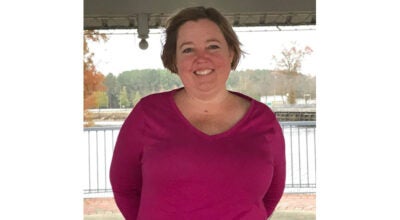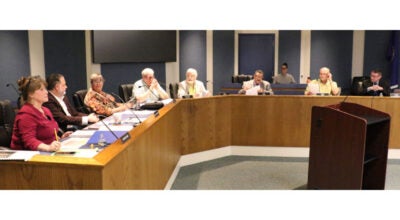Witnessing execution doesn’t always bring closure for the victims’ survivors
Published 8:29 am Wednesday, November 11, 2009
Billy Smith stepped into the little room with the big window, seeking some mix of solace, satisfaction, justice, closure. He wasn’t exactly sure. But he knew he had to be there. On the other side of the glass, strapped to a gurney with IV tubes in his arms, was the man who had murdered his father.
Smith had been just 18, fresh out of high school, when Willie Lloyd Turner gunned down Jack Smith during a robbery of the family jewelry store in 1978.
After the trial and the appeals and the relentless legal maneuvering, the son was nearing middle age when, finally, in the spring of 1995, it was the killer’s turn to die.
“Initially, I would have probably pulled the trigger and slept like a baby,” Smith said recently. But the years had mellowed his feelings a bit. “I just wanted to see it over. It had been such a struggle for such a long time.”
Too tense to sit, he stood near the glass, riveted, staring. Turner said only, “When will it start? Will I feel it?” The chemicals began to flow.
Smith quickly realized he was unprepared for the experience of seeing a killer put to death. Unprepared to be so … underwhelmed.
“Within two minutes it’s over,” he says. “He doesn’t flinch, he doesn’t move, he goes to sleep. Then they say, ‘Okay, it’s time to go.’ … The whole thing is very anticlimactic.”
That’s the first thing Smith would tell relatives of the victims of John Allen Muhammad who are journeying from as far as California and Idaho to witness the Washington sniper’s execution by lethal injection scheduled for Tuesday night: The execution of a killer can be just a little disappointing.
‘It helped to a degree’
The same note of ambivalence is what you tend to hear from other victims’ relatives who’ve been there — watching with tragic eyes from behind the glass in the lonely little witness room, where all is not resolved. They feel better. A little. Not much. It’s not the better they thought they would feel. They can hardly explain why. They exit the room with most of the ache they carried in.
“It’s not like, ‘Whoopee!’ “ says Dale Alexander. “It’s not like a ballgame, we won, home run.”
Her daughter, Lisa Alexander Crider, 23, the mother of a 5-year-old boy, was raped and shot in the face with a shotgun on the banks of the James River on Mother’s Day 1997. The killer, Brandon W. Hedrick, reportedly an acquaintance, was executed in the electric chair in 2006.
“It helped to see the completion,” Alexander says. “It helped to a degree.”
Smith and one of his sisters were the first in modern Virginia history to make that trip — the very first to accept the commonwealth’s invitation to victims’ relatives to be in the audience for the last act.
What did he expect? He’s still not certain. Something … more, after all the grief and loss and lawyers. A bang, not a whimper.
“If I had to compare it with the murder of my father, it was a very easy and peaceful death for Willie Turner,” Smith says.
Turner barged into Smith Jewelers in Franklin. Jack Smith filled bags with money and jewelry. Then Turner shot him in the head and pumped two more rounds into his body after it hit the floor. Now Billy Smith, 49, runs the store, with his father looking down from a portrait on the wall.
“I don’t think these people will get out of it what they expect,” Smith says.
And yet, he adds: “I don’t mean they shouldn’t want to do it. Because I would do it again.”
“I was relieved that it was over,” he continues. “I was happy that justice was done, finally. . . . I would not have felt the same if I had not witnessed it. But watching it the way I saw it, I don’t think made [the loss of my father] any easier. Sometimes I think I have more anger because it was so easy for [Turner].”
‘I did my part’
Virginia has put to death 77 men since Smith witnessed Turner’s execution.
Relatives of the condemned are not allowed. More often than not, family members of victims have wanted to make the trip to the “death house” in the Greensville Correctional Center, in the little town of Jarratt, near the North Carolina border. But it’s not for everyone. The 1994 execution of Timothy Wilson Spencer, the “Southside Strangler,” was the first time Virginia began permitting victims’ relatives to witness. No one took that opportunity.
The change in procedure was initiated in 1994 by then-Del. Robert F. McDonnell — now the governor-elect — whose proposed legislation actually went down to defeat by one vote in the state Senate. Supporters said bearing witness was a privilege owed to the relatives; critics said the idea was ghoulish and vengeful. Gov. George Allen enacted the provision by executive order.
Granting access to victims’ relatives became common across the country in the 1980s and 1990s with the rise of the victim-rights movement. The 2001 execution of Oklahoma City bomber Timothy McVeigh was witnessed by more than 200 survivors and victims’ relatives via closed-circuit television. Maryland also allows such witnesses. A parallel movement of victims’ relatives against the death penalty also has grown, and members sometimes join vigils in protest of executions.
Linda Norton was against the death penalty until 1991, when Johnile DuBois beat and shot her mentally disabled brother, Philip C. Council, 39, in a convenience store in ortsmouth, because her brother couldn’t get the cash drawer open fast enough. Norton and other relatives watched DuBois’ execution in 1998.
“I wouldn’t say it made me feel better,” Norton says. “Did it make me feel worse? … It wasn’t anything I was looking forward to seeing. It was something I felt I had to do. . . . It’s to say, I was there, I saw it happen. I did my part to make sure whatever was supposed to happen, did happen.”
The private room
Virginia’s death house has two rooms for witnesses. One is for state officials, attorneys, clergy, reporters and volunteer citizen witnesses not connected to the crime, whose presence is also called for under Virginia law. The condemned person can see into this room.
The second room is for relatives of victims. It’s sparsely furnished with just a few chairs. This room is darkened, so the witnesses can see out but the killer can’t see in. Corrections officials don’t publicly identify these witnesses, to protect their privacy.
Muhammad, 48, and his partner Lee Boyd Malvo, 24 — now serving a life sentence —killed 10 people during their 2002 rampage in the Washington area. With so many victims, the witness room was likely packed.
“Space is limited,” says Larry Traylor, director of communications for the Virginia Department of Corrections. “We’re looking at victims from all over the country. … We’re working with all the families to come up with a plan where the families certainly can be represented, maybe not in the volume of family members they would like to have there.”
Some might feel closure.
It depends, says Billy Smith.
“They might come out of it saying, ‘Dammit, they shot my mother, father, daughter, son, brother, sister down like a dog at a gas station, for nothing, and he just went to sleep.’
“Others may come out of it and say: ‘I saw justice done.’ “





